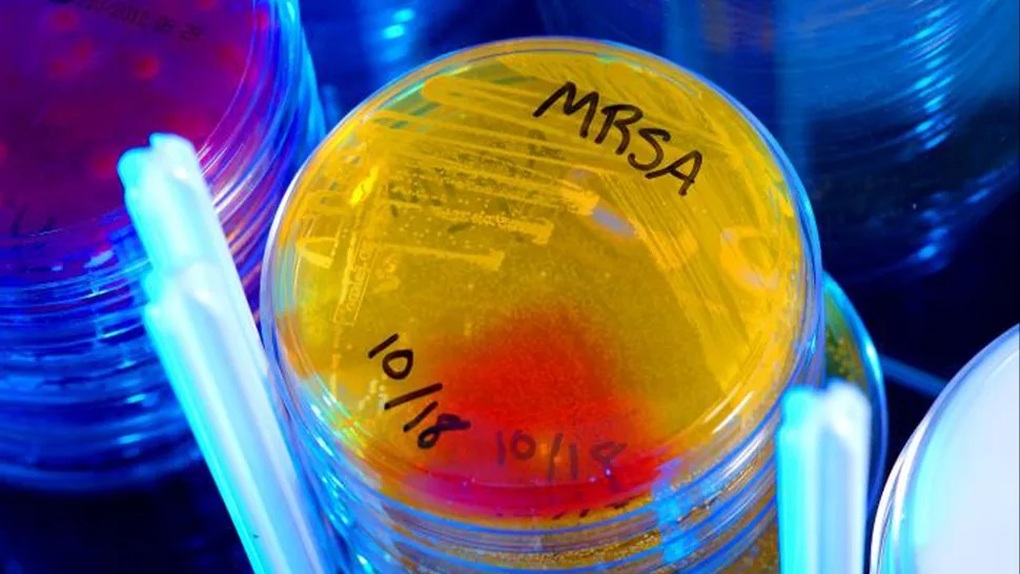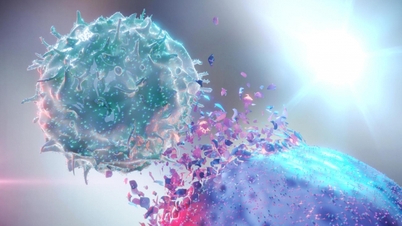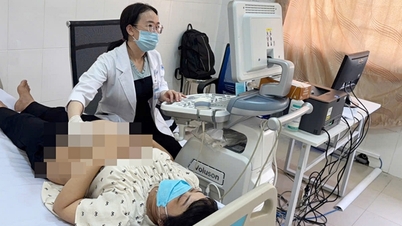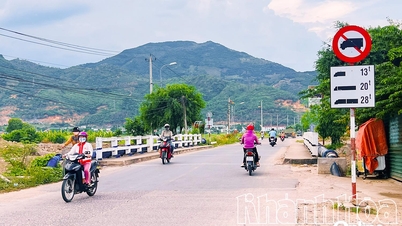The new antibiotic was discovered when researchers were studying how an old drug worked. In the process, they stumbled upon a previously unknown compound.
The compound has the ability to kill “tough” bacteria strains such as methicillin-resistant Staphylococcus aureus (MRSA) and Enterococcus faecium, which are causes of serious infections in hospitals and are increasingly difficult to treat with current drugs.
What is special is that this new compound is created from a type of bacteria that lives in the soil. Although it is of natural origin, this compound possesses outstanding antibacterial properties and is many times more effective than the original antibiotic that was initially researched.

MRSA, a drug-resistant superbug, commonly infects people being cared for in hospitals (Photo: Melissa Dankel).
From basic research to underground “gold mine”
The research team, led by scientists Lona Alkhalaf and Greg Challis, began their work with the goal of understanding the mechanism of production of a known antibiotic called methylenomycin A.
This antibiotic is produced by the soil bacterium Streptomyces coelicolor. They were not looking for new antibiotics, but rather to understand how bacteria make drugs.
Microorganisms, including bacteria and fungi, are capable of producing thousands of complex compounds. Many of these compounds have become drugs for human treatment, such as antibiotics, anticancer drugs, and antiparasitic drugs.
By understanding how these compounds form in nature, scientists can develop new drugs that are more effective and have fewer side effects.
In bacteria, biological compounds are often made from specific groups of genes called biosynthetic gene clusters. The team knocked out some of these genes to see how the production of methylenomycin A was disrupted.
When the reaction was stopped midway, intermediate products began to appear. Among them were two compounds that had never been reported before.
One of the two new compounds, called pre-methylenomycin C lactone, showed very strong antibacterial activity when tested against Gram-positive bacterial strains.
In particular, this compound effectively kills MRSA and Enterococcus faecium - two types of bacteria that are very difficult to treat because they are resistant to many common drugs.
Outstanding activity and anti-drug resistance signature
Not only is pre-methylenomycin C lactone about 100 times more powerful than methylenomycin A in killing bacteria, it also has another very notable advantage.
During the 28-day trial, the bacteria did not develop resistance to the new drug.
In the test, Enterococcus faecium bacteria were continuously exposed to the new compound at increasing doses. This is the ideal condition for the bacteria to learn to resist the drug.
However, the results showed that the minimum inhibitory concentration remained unchanged throughout the test. This means that the compound still maintained its antibacterial effect without the bacteria becoming “resistant”.
This is an important step forward because antibiotic resistance is making many infections harder to treat than ever before. When a new drug is available that bacteria are less likely to develop resistance to, it is a good sign for medicine.
Scientists remain cautious, however. There is a big difference between a compound that kills bacteria in the lab and a drug that is actually used in the field, says chemist Stephen Cochrane of Queen's University Belfast, who was not involved in the research.
“A drug to be approved for human use must meet many criteria such as being non-toxic, stable in the body and having clear clinical effects,” he said.
Opening up new directions in treating drug-resistant bacteria
After discovering the potential of pre-methylenomycin C lactone, the team planned to develop the compound into a drug.
They are now working with chemist David Lupton at Monash University in Australia to find a way to synthesize the compound in the lab instead of relying on bacteria to make it.
If successful, they could produce the compound in large quantities, allowing further research into how it works and its effects on human cells.
This also opens up the possibility of tweaking the chemical structure of the compound to create variants that are more potent or have fewer side effects.
The next step, the researchers say, is to identify the compound's biological target in bacteria and analyze how small changes in its molecular structure might increase or decrease its antibacterial effectiveness.
That knowledge will be the foundation for developing more antibiotics in the same group, giving medicine new weapons in the fight against drug-resistant bacteria.
While much work remains to be done, the discovery suggests that nature still has many secrets to uncover. At a time when many drugs are losing their effectiveness, a new, effective, and resistant compound may be just what the medical profession has been waiting for.
Source: https://dantri.com.vn/khoa-hoc/phat-hien-khang-sinh-manh-gap-100-lan-mang-hy-vong-moi-cho-y-hoc-20251110120120821.htm



![[Photo] Prime Minister Pham Minh Chinh attends the annual Vietnam Business Forum](https://vphoto.vietnam.vn/thumb/1200x675/vietnam/resource/IMAGE/2025/11/10/1762780307172_dsc-1710-jpg.webp)
![[Photo] Prime Minister Pham Minh Chinh attends the Patriotic Emulation Congress of the Ministry of Foreign Affairs for the 2025-2030 period](https://vphoto.vietnam.vn/thumb/1200x675/vietnam/resource/IMAGE/2025/11/10/1762762603245_dsc-1428-jpg.webp)
























































































![Dong Nai OCOP transition: [Article 3] Linking tourism with OCOP product consumption](https://vphoto.vietnam.vn/thumb/402x226/vietnam/resource/IMAGE/2025/11/10/1762739199309_1324-2740-7_n-162543_981.jpeg)











Comment (0)